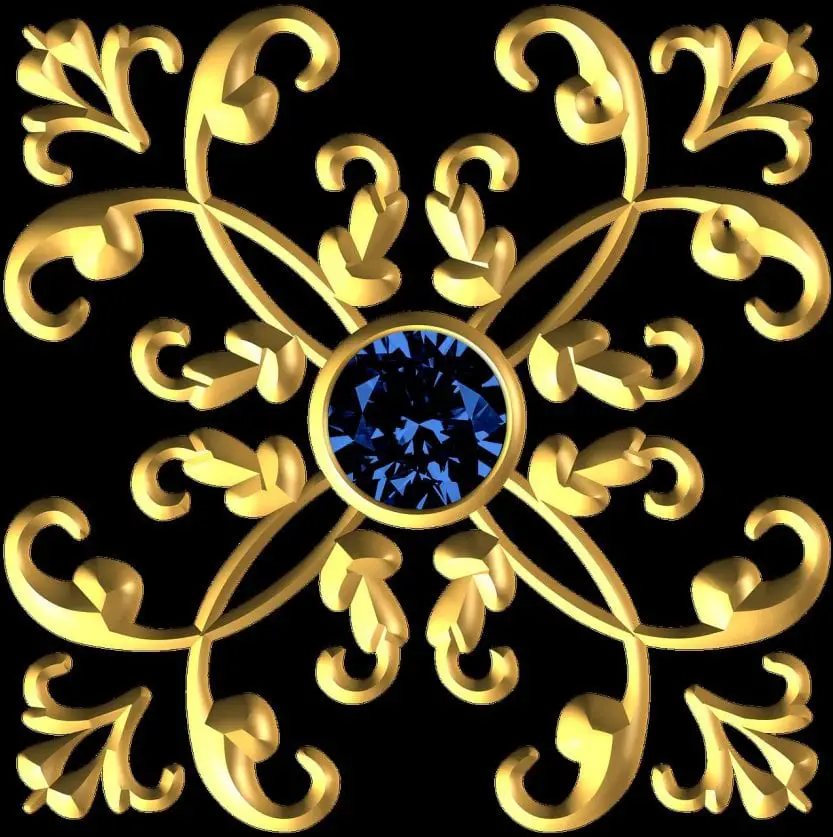The affinity that people have for the color blue is a well known fact. By now, it is not just something assumed, but the fact that blue is a favorite on a global scale is backed by research. The age-old myth that we have been brought up with, that blue is exclusive to the male gender, has been busted. Women and girls love the color, just as much as males, if not more. It is the color of nature, as is seen in blue skies and oceans. It is also a preferred color of royalty, as depicted in clothes that members of royal families like to be seen in. Blue comes in many shades and depending on the context, it has a certain versatility about it. People love it.
Blue symbolism has prevailed since ancient times. Civilizations as old as the Egyptian and Sumerian civilizations have used the color blue in their script as well as in their crafting of jewelry. Egyptian hieroglyphics shows blue pigment used with regularity. In Ancient Egypt, the color blue was created from a semi-precious gem called lapis lazuli. The gemstone was ground into a fine powder to make the color. The procedure was an expensive one. Soon, the Egyptians found a way to create an artificial pigment called “Egyptian Blue”. Lapis Lazuli, along with turquoise, also a rare gemstone in ancient times, was used in jewelry as well. Both stones were used in ornate Sumerian jewelry craft too. Kings had both these stones fitted into their royal crowns. As a result, blue symbolism came to be reflective of royalty and gained prestige as a color.
There is a myriad of evidence in history that shows the importance of the color blue, not just as far as jewelry is concerned. In the Middle Ages, in Western Europe, when the Church was the de facto ruling element, the color blue was noteworthy. Kings reigned according to the laws of Christianity and blue was considered a sacred color. It was also a color that was used by most Renaissance painters to depict royalty and holiness. Most of the paintings of the Madonna show her wearing robes of blue.
Royalty and the color blue
The color blue has gradually gained relevance as a color fit for royalty. The shade of blue, known as “Royal Blue” is a light and a dark shade of blue azure. The story of its origin goes back to when cloth merchants created garments of this color in Somerset, England, for Queen Mary, the then consort of the king, George III. Since then it implies blue symbolism of an imperial nature. It is representative of authority, with many people in the armed forces clothed in this color. Flags of many countries sport this color, as do many significant football and sports teams. The color has an official quality, it can be said.
Ancient Chinese royalty is also known to have had a preference for blue in their courts. The blue hue was made from chemicals, and many members of the court were said to have fallen ill from poisoning as these dyes were used in their clothing.
Spirituality and blue
Blue is a color, that many believe, promotes an aura of positivity, trust, productivity, and all things that are essentially good. It has a richness, but it’s not gaudy. Yet, this color can be elaborate if it wants to. Recently, the color blue has dominated technological, medical and financial branding domains, and promises to be the color of the future. Blue is definitely here to stay.
Sapphires
Since times of long ago, the sapphire as a gemstone, though not as precious as the typical diamond, has had mystery and curiosity associated with it. As endorsed by a royal family, such as when Princess Diana of the United Kingdom wore it as her engagement ring, it takes on even more meaning. Years later, Kate Middleton wore it as her engagement ring, when Prince William gave it to her as a sign of their upcoming betrothal. However you may look at it, the sapphire gemstone, and very specifically the blue sapphire, always tends to be linked to romance and royalty. In tandem with the diamond, emerald, and ruby, it is regarded as one of the most famous and priceless gemstones globally.
The vivid blue variety of the gemstone is considered extremely valuable and precious. It has adorned the robes and jewelry of practically every European royal family since the beginning of time. This is why a particular deep blue sapphire is known as the “Royal Blue Sapphire”. Ancient queens and kings of Rome and Greece thought that sapphires acted as a deterrent from envy and harm. In the Middle Ages, they were worn to ward off evil spirits. Sapphires are particularly a favorite of the British royalty. The blue symbolism of a sapphire has to do with all that is divine and just.
Royal sapphires of Great Britain
The Imperial State Crown of Her Majesty, Queen Elizabeth II is adorned with the most breathtaking sapphires in a rich, royal blue hue. The Queen wears this crown as part of the opening ceremony of each parliamentary session. This crown is embellished with two prominent blue sapphires. In the middle of the Cross Pattee, positioned at the top portion of the crown, is the St. Edward’s Sapphire. The band of the crown has the Stuart Sapphire.
The St. Edward’s Sapphire has an octagonal shape and is faceted in a rose cut. According to legend, this sapphire was in the crown of Edward the Confessor. He was later called St. Edward. He ascended the English throne in 1042. The sapphire was then placed in the Imperial State Crown of Queen Victoria. Here, it took on an authoritative place of pride.
The Stuart Sapphire is a sapphire of 104 carats. It has an oval shape. This stone is not faceted, but is fashioned as a cabochon. It has a smooth surface, much like a bead. Thought to have originally belonged to the king, Charles II, it was, like the St. Edward’s Sapphire, positioned in Queen Victoria‘s Imperial State Crown. In addition to these two very conspicuous famous sapphires, the Queen Elizabeth II has several brooches, earrings, suites and tiaras set with blue sapphires. Her collection, passed down through the years, manifests a love for royal blue sapphires and the respect for blue symbolism.
Other sources of symbolic value
Experts and gemologists agree that the blue Kashmir color of the gemstone that is only second in hardness to the diamond, is the most valuable and beautiful. This blue symbolism of the intensely desired stone makes it very expensive to own. The color is what strikes you instantly. It is a deep blue with purple hints. The Burmese blue sapphire comes close in color. Burmese gemstones range from deep dark blues to lighter cornflower blue shades.
Ancient Persians had a belief that sapphires came from a pedestal that acted as a support for the earth. They revered it as spiritually important and thought that it’s reflection colored the sky blue. The Catholic Church has accorded great worth to the blue sapphire. Pope Innocent III issued a decree stating that all bishops should wear a ring set with gold and an uncut blue sapphire. The reason for this was that the gemstone possessed traits and qualities of a virtuous nature akin to a man of the church. It signified that priests belonged to a heightened position in society, much above mere men in terms of purity and intellect.
Notably, several cultures have bowed down to the sapphire, especially the blue variety. Hindus believe that it holds good fortune for the wearer as it causes Saturn to be favorable in this way. Italians think that blue sapphires can be worn as charms to ward off eye diseases and depression.
Wearing sapphires
If you are fortunate to wear the birthstone of September, the blue sapphire, you should know full well that it is connected to very positive characteristics. By its very nature, it is a stone of great learning, clarity of thought and wisdom. Mystics believe that the true blue symbolism of the sapphire is in the relevance of being the “third eye”. As a result, it gives the wearer a great deal of positive power.
A stone that stands out for its color, the blue sapphire is an ideal work colleague or an encouraging study friend. Since it is the second, only to a diamond, in durability, it has the energy to weather all storms. This energy is transferred to the wearer. People who are fortunate enough to wear the stone swear by its healing and restorative powers. The word “sapphire” stems from a Greek word, “sappheiros”, the meaning of which is “blue stone”. Sapphires that are legendary are the Star of Bombay, the Rockefeller Sapphire, and the Bismarck Sapphire. The Logan Sapphire, at 422.99 carats, has the distinction of being one of the biggest faceted blue sapphires in the world. Sapphires come in many colors, from pink to champagne. Nonetheless, the original and natural blue ones are the ones that have stood the test of time. These ring true for all those who wear them.



